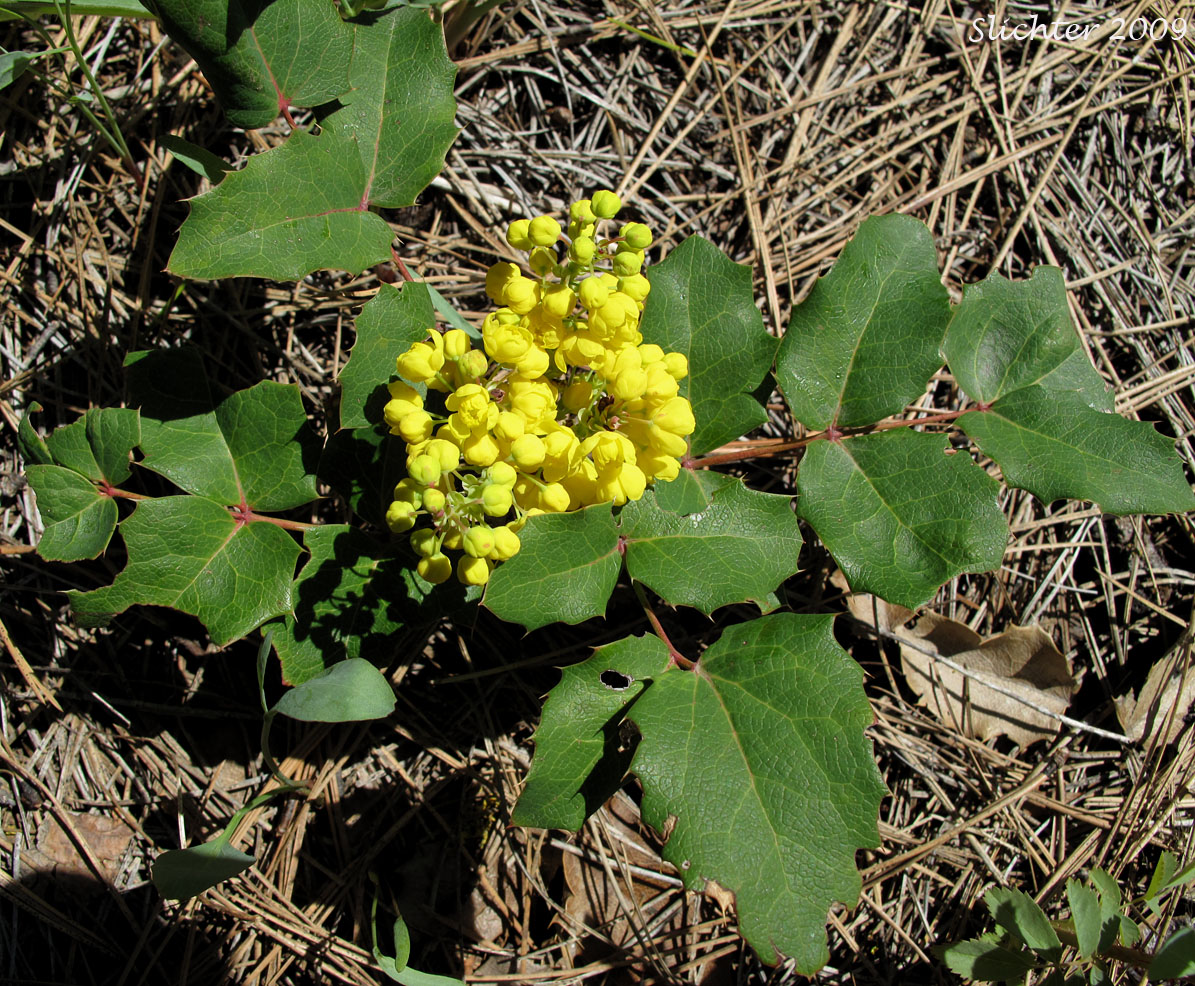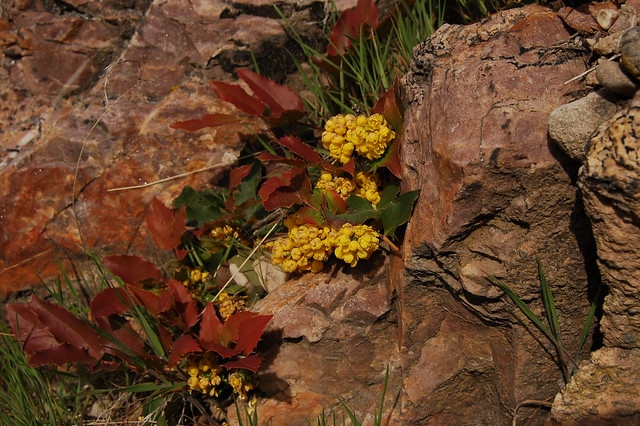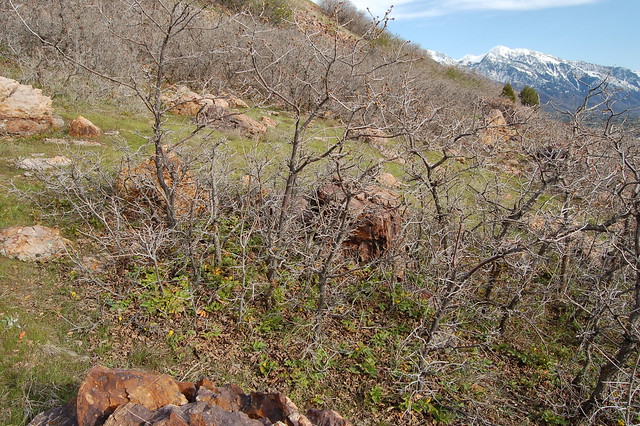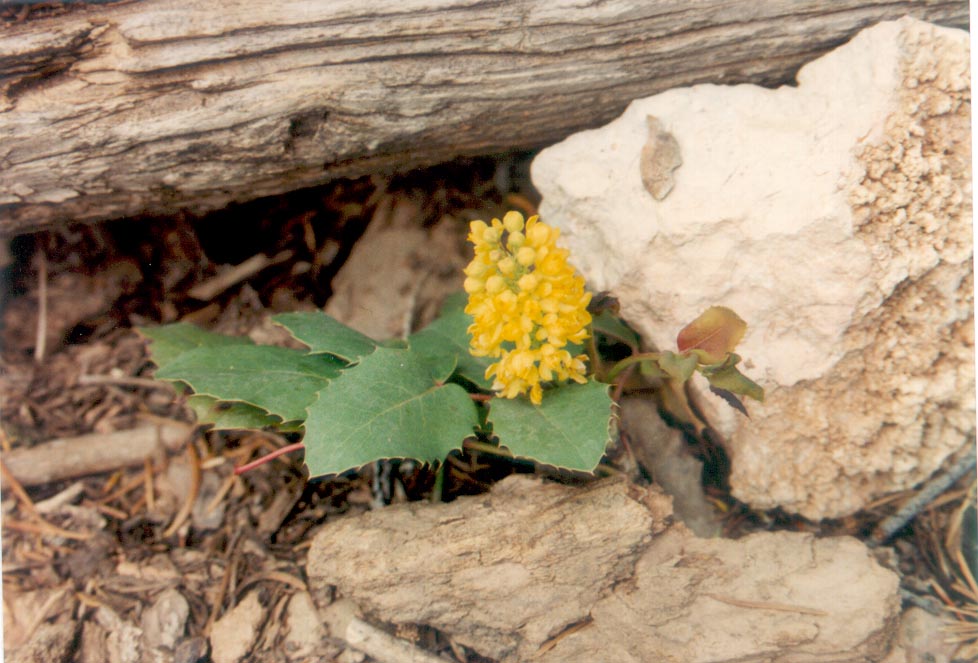 |
| photo: Paul Slichter |
In the winter time they also add a new twist to the look as the leaves themselves will turn red to burgandy. Although some of the leaves will fall off in dormancy, many linger on the plant. Speaking personally I can really only relate to my experience with them at elevation 4500' where winters were freezing and had snow at times. And yet even in the summer they thrived in the heat underneath the Chaparral plant community canopy where I planted them.
 |
| Photo by Donald Kirk |
Photo by Alder, Michael G.
For me however, I wanted them established with a mycorrhizal connections and eventually taking care of themselves when eventually connected to the grid I create underground which allows a plant community to take care of and maintain itself with little help from me. Take a look at some photos of what they look like and how they behave in their own natural settings. Often you can learn much by taking some mental notes from observing nature and replicating this in your own backyard. In the picture below, notice how it forms a nice carpet under the Ponderosa Pines.
 |
| Photo by Al Schneider |
Looking at such scenes above should get your mental wheels turning as to planning and other architectural goals when you choose to layout a landscape theme. Here is it's native ranges. The light green reveals where it is native and not rare. The dark green indicates where it has a presence in specific locations in the other states and the light tan indicates it's once historic range. Frankly, this plant can be grown just about anywhere.
These next picture are strictly for the readers or gardeners to appreciate just how tough these little plants are and you need to realize that they wouldn't even exist here in these harsh settings were it not for mycorrhizae. These next pictures are also from the State of Colorado in the southwestern United States in and around the Colorado Plateau regions where extreme heat and cold accompanied by often dry conditions during any temperature range make conditions for any plant a challenge for survival. This should be obvious as you can to tell from these pictures of plant in the dry adobe red sandstone which surrounds these plants in the photos. Very little organic matter here.
 |
| photos: JR Hartman Universität Greifswald |
 |
| photos: JR Hartman |
I went around to the other side of the house where I was planting some trees and clearing some brush. I looked up and saw big white billowing puffs of smoke over the roof coming from the other side. I ran a round the corner of our house and found a fast moving though only a few inches high fire making it's way through the understory of the Redshank and New Mexico Locust. I ran and got the garden hose and turned it to full blast. Put the fire out and fortunately for my backside it came to an abrupt end at the dirt road, thought sparks were being carried over to the other side and I had to run over and stomp out with my feet a small bunch of dried foxtails. I dodge a huge bullet. I could imagine myself being in debt for the rest of my life, but only after I got out of prison. Not to mention the guilt of harming the property and lives of my neighbours for one moments stupid unthinking act. Only that road in the photo above acted as the perfect firebreak. The fire would have been on the right. *sigh*
 |
| Photo by Tony Frates |
But this photo to the right here should illustrate Mahonia repens ability to spring back easily from a fire. Unlike the chaparral below, all of my shrubs and small trees were untouched by the flames, though some small New Meixco Locust clonal saplings did get weeded out which was something I was going to do manually anyway. Yet even in this almost catastrophic situation I could also view and experience first hand how a small fast moving fire could clean out and maintain an understory even in chaparral.

This next picture is the exact location of where this fire took place. The location where I dumped the ash is right there at the top of the drive and working down from there and to the left. You can see those same New Mexico Locust (Robinia neomexicana) and in the foreground amazingly is still a little Sugarbush (Rhus ovata) which also was untouched. The winds were blowing from right to left in this photo. The road it out of the picture, but it also is to the left. What an absolute stupid blunder that really could have been, not to mention the misery caused to my neighbours and others..
This next picture illustrates what I did as far as enhancing the understory decor as far as a natural forest floor look. I went up to Idyllwild, where I use to live and obtained some old Ponderosa pine and Incense Cedar logs for decorative special effects along with some rocks from the Pinyon area above Palm Desert, CA which are a flat grainy plated hard granite stone from the washes and quite attractive. Planting anything in and around objects and in niches and crevices gives added texture and eye interest.
Hope this helps some out who need ideas for small spaces. Common larger varieties of Mahonia (Berbsis) are nice, but can take up larger space if you don't have it. When you are out walking in nature, take notice of details of how things grow, what shapes them, what type of community of other plants they grow with and always think about what is going on underneath the ground to make it all happen above it.






What an interesting story about traveling through the snow storm! That happened, again, last Friday night! The ranch owners where I board my horses came to the desert for a doctor's appt. On the way back up to Anza from Palm Desert, they got stuck in a snowstorm. She told me the truck ahead of them actually slid OFF highway 74!!! (up past Pinyon). He was so busy trying to avoid ruts in the road that he didn't pay attention to where he was going and smashed into the side of the road (up by Springcrest)...I'm loving your blog and learning so much from it! Thanks for stopping by mine!
ReplyDelete~~Cheryl Ann~~
Yeah and I have some other hairy tales of coming down Keen Summit to Lake Hemet on Hwy 74 from Mountain Center as well when there was ice conditions on the road. The problem is on those curvey downwards sloping roads, you could be ever so slightly coasting and doing find until you come to a curve. You turn the wheel slightly to the right following the road but your momentum still wants to go straight. Spooky!!!
DeleteLater on I'm going to write a piece on that switched back logging road behind Sugarloaf Cafe (if it's still called that) and also that lone Jeffrey along Hwy 74 just west of the Santa Rosa Mountain Road Forestry Rd turn off before you get to the Santa Rosa Indian Reservation entrance. It has to do with my own personal research of where the original historical forest tree line use to be down the mountain and where things are headed today. What I found was incredible and I suppose sad in away. Things must have been more beautiful in so many was back before the Europeans got there.
Glad you enjoyed this blog. My other one gets more into the sciences of how ecosystems opperate, but with a flare for making it fun and informative to all folks with simple common every day illustration to explain the complexity. Most scientists use 'Intellect Speak' in their research world which is never meant for the public in the first place. I hope to change that there, though there is an element of necessary terminology.
Earth's Internet: A Layman's Guide to Installation and Maintenance
Hope you enjoy that blog as well and find benefit for your own personal garden and landscape usage. And don't hesitate to ask questions about your area since I practically know it like the back of my hand.
Kevin
---
Kevin, you've really sold me on the Mahonia repens. Not only is it a tough little plant, but the blooms, fruit and fall foliage are all so striking. At 2,000 ft., we're a bit lower than your property in Anza, but still have our bouts with frost and, once in a blue moon, some light snow. So, a cold hardy plant like this one would be a great addition to our landscape. Your account of the near disaster with the fire really struck a chord with me. All of us living in chaparral country here in SoCal are subject to the capricious, unpredictable and often destructive nature of those dreaded Santa Ana winds. When we first moved out here, we were still a bit green on 'country' living, and there were a couple times I remember my husband firing up the charcoal grill on the back patio while the winds were gusting. I didn't think anything of it until a light bulb went off in my head and I realized that we were literally surrounded by a tinder box of sages, greasewood, buckwheats and other super flammable vegetation. We don't do that anymore since we don't ever want to be on the evening news and/or win a Darwin award...Love your blog, btw, and looking forward to more great posts!
ReplyDeleteCheers,
Arleen
Arleen:
Delete"At 2,000 ft., we're a bit lower than your property in Anza, but still have our bouts with frost and, once in a blue moon, some light snow. "
=========
Actually it does great at my mum's place in El Cajon where it is under the shaded canopy of pines and California Sycamores.
---------
Arleen:
"I remember my husband firing up the charcoal grill on the back patio while the winds were gusting. I didn't think anything of it until a light bulb went off in my head and I realized that we were literally surrounded by a tinder box of sages, greasewood, buckwheats and other super flammable vegetation."
=========
Up in Anza if I remember correctly, we had to call the fire station if we were going to Bar-B-Que. Never did it on a windy day, but I did have some friends over once for steaks on a December Sunday afternoon when a snow blizzard kicked in and everyone went inside while I sat bundled up on my covered porch deck until all the steals were through grilling while snow was driving horizontally at me. *smile*
came via Cheryl's post on her yucca flowers. Some houses here grow them. I don't think they know it is edible. It just drop on the ground. I just took flowers this week.
ReplyDeleteMy fascination with plants started with curiosity of how the Native American Indians lived off the lands with plants. If you are in New Zealand, then look up the scientific names there and see if they are edible. The ones here actually taste great in Salads with other greens and a Balsamic Vinegar & Olive Oil dressing.
DeleteThanks for stopping by ann
Kevin
--
This is in regard to my post of the old cabin up on Table Mountain...Yes. I saw the dirt road. We don't have a 4x4, but some people have hiked back to the old mine up there and posted photos. I won't do that road without hubby...We used to own a 5 acre parcel on that road. Mr. Garner used to call it "The Snake Pit" because it was all rocky and rattlesnakes denned up there. Somebody bought it and put a house right on the top (...shudder...)...better them than us, as I have 5 horses now and it didn't have much usable horse pasture! This cabin was about 1/4 mile back in and to the right, alongside the wash. It looked empty, but I didn't wish to hear the click of a shotgun, so I turned around! Thank you for the info! I always appreciate it! No, I had to groom my horses, so I didn't go on the hike. They are shedding like mad right now! Ugh!
ReplyDelete~~Cheryl Ann!!